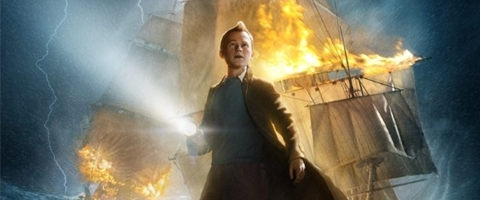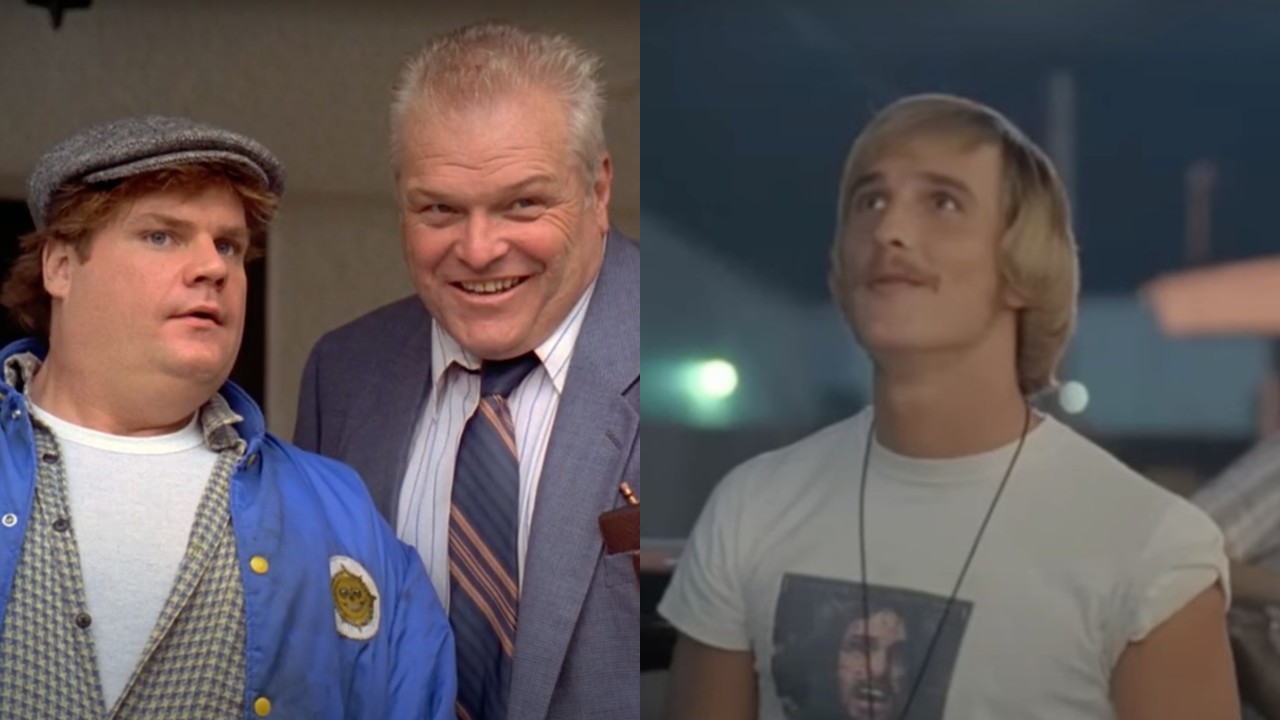With an action-filled mystery adventure featuring an energetic young protagonist globetrotting around the world, it should not be much of a surprise that Steven Spielberg’s The Adventures of Tintin: Secret of the Unicorn is a very busy movie. Its picture is busy, its action is zippy, and the whole thing plays out so quickly that many gratifying but quick moments could easily be missed on a first viewing. With a second viewing, many of these sly comments and candid characterizations color the screen and prove The Adventures of Tintin is truly more than just a basic action piece, although the action, too, is thrilling. The Adventures of Tintin splashes together its storyboards from three very famous Hergé stories: “The Secret of the Unicorn,” “The Crab with the Golden Claws," and “Red Rackham’s Treasure.” Together, the three different stories could have contributed to a script that never really felt like one tale; however, Stephen Moffat, Edgar Wright, and Joe Cornish’s tale never falls into that trap. Not that The Adventures of Tintin is a one-note script -- quite the opposite -- but it does tell one (rather jaunty) story.
We begin with an introduction to the affable Tintin (Jamie Bell), who just so happens to be hanging out in the marketplace when a pickpocket runs amok. We may wrongly assume Tintin is about to embark on a journey involving said pickpocket, but that is actually a mystery for blundering policemen Thomson and Thompson (Nick Frost and Simon Pegg) to solve while Tintin moves on to a bigger adventure, which begins with the purchase of an antique desktop ship.
Turns out the beautifully crafted boat hides a clue to the secret of a hidden treasure, sunk long ago by one Sir Francis Haddock. After learning there are more boats to be found, Tintin and his faithful dog seek to discover them, eventually making an enemy out of complicated villain Rackham (Daniel Craig) and teaming up with drunken good guy Captain Haddock (Andy Serkis), who often hinders plans as much as he helps.
Like Hergé’s comic-book world, Spielberg’s film is busy and colorful, chock-full of mystery and adventure. There are tons of nods to Hergé’s The Adventures of Tintin world throughout the film, including a cameo by the author himself in the opening scene. These moments cannot be appreciated nearly as much if you can’t get past the motion capture animation, which is a far cry from the animated drawings in Hergé’s stories, but thankfully also a far cry from the creepy, off-putting characters that populated earlier motion capture pictures, including The Polar Express. Indulge in the nuances and depth of the new technology -- the very careful way the sunlight lands on characters faces, especially -- and you will make it through the movie a much happier viewer.
Despite the nods to Hergé’s world, The Adventures of Tintin is very much a Spielberg creation, propelled forward by producer Peter Jackson, who also collaborated on the making of the film. Much of the over-the-top but plausible arcs in the Tintin stories are made more slapstick and fantastical here, which is fine, provided we are willing to roll with it. Ultimately, this is Spielberg’s Tintin, and he’s going to live and die by his own point of view.
From The Artist to Hugo, 2011 was a year that really stepped back in time to celebrate the magic of movies. In many ways, The Adventures of Tintin is very much a byproduct of this nostalgic outlook, a simple movie about a boy and his pup that fans all over the world have loved for a very long time, supplemented by a John Williams soundtrack that never stops reminding us of past grand movie moments. In other ways, The Adventures of Tintin takes the framework of a Spielberg action-adventure story and recreates it for a whole new audience. The byproduct may lack the wistful attachment fans of the series may look for, but the ultimate result is no less impressive. The look of this disc is extremely similar to that of Hugo, which was also produced for at-home release by Paramount. The similarities run from the look of the boxes and the Blu-Ray disc itself, down to the way the menu unfurls and has a little compass piece in the corner (in Hugo the compass is replaced by a clock). However, the extras on The Adventures of Tintin disc flow much better. There is a really nice “Play All” button on the menu that allows each of the extras to play out like one extremely long “Making of” featurette, which is really how the extras on this particular disc are meant to be watched.
The first segment, “Toasting Tintin,” shows how production started in 2009 and worked through challenges to create a film that was exactly what Spielberg and Peter Jackson had envisioned together. While Spielberg directed this film, and really has been the big name attached, each of the extras really flesh out just how much of a collaborative effort The Adventures of Tintin truly became.
There is a great love for the Tintin books in the extras, and even the pup, Snowy, gets his own segment. John Williams’ music also gets a proper look, including a cute moment when the veteran composer admits he used a Disney trick to weave the music with the animation.
The big bonus feature focuses on the motion capture, and the reasons why it was chosen to bring Tintin and co. to the big screen. Most of the information is pretty cool, especially if you are interested in motion capture, but I will warn you, the disc is extremely in depth and lengthy. If you aren't excited about motion capture, it could be a huge snore fest, although a star-studded one, with appearances from the actors and even writers Steven Moffat and Edgar Wright.
Netflix’s Avatar: The Last Airbender Will Feature A Toph Who’s ‘Slightly More Feminine’ Than Her Cartoon Counterpart, And I Have Mixed Feelings
Tommy Boy's Director Recalled Matthew McConaughey's Audition For The Movie And How He Filmed It In A 'Room Filled With Mouse S---'
'What The F--k? Of Course We Are.' Marvel Apparently Was Not So Enthusiastic About Florence Pugh Pulling A Tom Cruise And Jumping Off A Building











